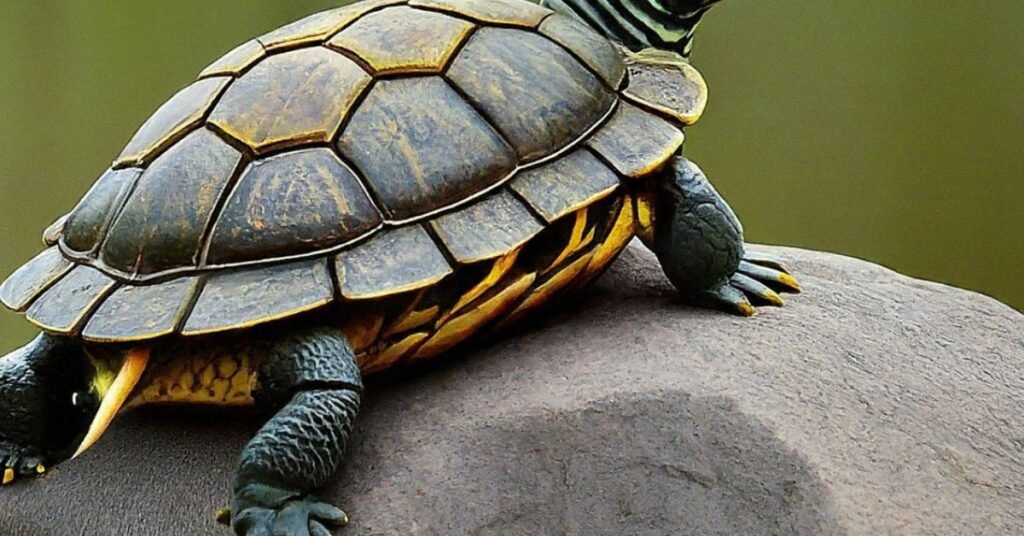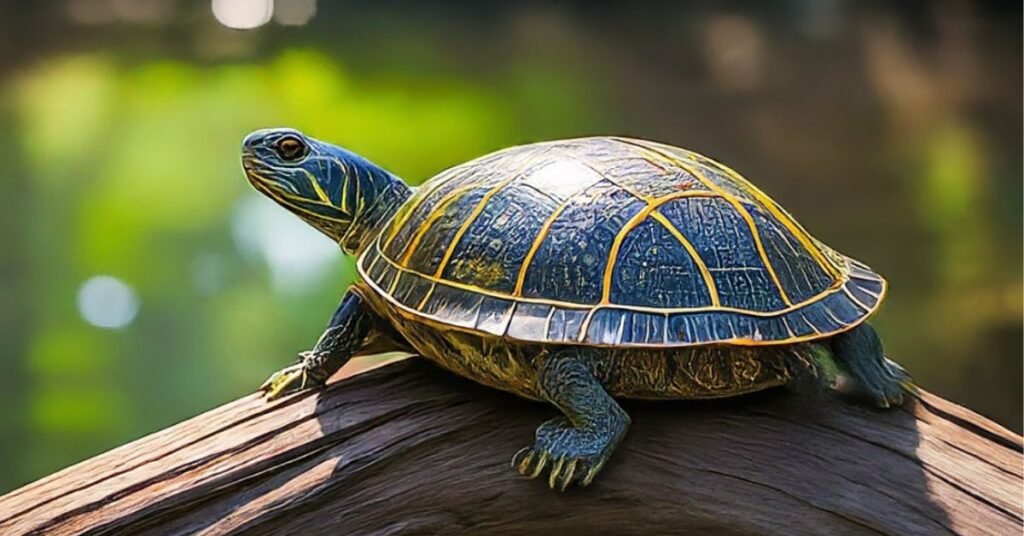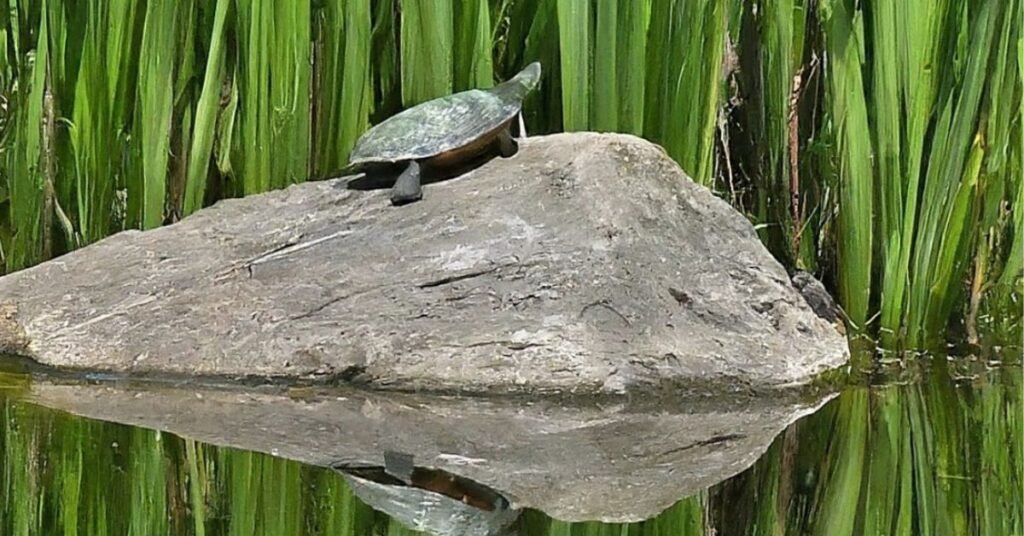Turtles are interesting in many ways, whether it is because of their physical features or their evolution over time. As humans or being familiar with mammal animals, we mostly know about nose and lung breathing for oxygen intake.
But how do turtles breathe? Is it the same as ours? Turtles breathe like us, but they have more breathing mechanisms than only lung breathing. It is said that turtles breathe through their butt also. So, do turtles breathe out their buttholes for real?
Turtles breathe with the help of their backside hole, which is the cloaca. This breathing mechanism is known as cloacal respiration. In today’s post, we will be diving into this question in detail do turtles breathe out their buttholes?
Table of Contents
Do Turtles Breathe Out Their Buttholes?

Yes, turtles can breathe out with their backside organ, known as the cloaca. But it’s not quite a butt in the way we think of it for humans or other animals. Turtles have a special all-in-one opening called a cloaca, which is similar to the location of the butt in many animals.
Some turtles can absorb oxygen through this cloaca when underwater for a long time. The water gets absorbed through the cloaca, and the oxygen goes right into their bloodstream.
They also use cloaca for waste release, laying eggs, and sometimes even mating. So, while they aren’t precisely “breathing out of their butts,” they are using this special opening to take in some extra oxygen when they need it.
What is Cloacal Respiration (Butt Breathing)?
Some turtle species breathe through their cloaca, which is an exciting adaptation. The cloaca is an opening organ of turtles that is used for excretion, reproduction, and, in this case, respiration.
Using this unique method of breathing, turtles can extract oxygen from water while submerged, which is particularly helpful when it’s cold or oxygen-poor.
As part of cloacal respiration, turtles absorb oxygen through their cloaca, a posterior orifice that serves multiple functions. They use this to get oxygen in addition to their primary breathing through their lungs, especially when they’re underwater.
How Cloacal Respiration Works for Turtles?

So, how exactly does this “butt breathing” work? Inside the cloaca, there are hidden compartments called bursae. Think of them as tiny, built-in breathing holes. These bursae are lined with super-thin tissues that have lots of blood vessels running through them.
- Water Intake: The turtle takes in water through its cloaca.
- Oxygen Grab: The oxygen in the water is absorbed through the bursae’s membrane and enters the bloodstream.
- Waste Out: Just like regular breathing, the turtle gets rid of waste gas (carbon dioxide) back into the water through the same bursae.
Though it’s not as powerful as lung breathing, it’s enough to keep a turtle going during periods of low activity, like hibernation or brumation. So, even when they’re underwater for a long time, turtles (who are capable) can use their cloaca to breathe a little easier.
Why Cloacal Respiration is Important
This “butt breathing” trick is a lifesaver for turtles that spend lots of time underwater, especially those in chilly places. This cloacal respiration is a built-in mechanism in most aquatic turtles.
Imagine a turtle in a freezing pond—staying submerged helps it hide from hungry predators and doesn’t use too much energy trying to stay warm. But how do they breathe when they are underwater for so long?
That’s where cloacal respiration comes in. This unique ability lets these turtles stay underwater for long periods without popping up for air. It’s essential during winter when the surface might be frozen over, which makes breathing difficult.
Functions Of Cloaca
Turtles Cloaca is kind of like a multi-tool for them. Here are the three main things it does:
Waste Disposal: The cloaca is the exit point for both their poop (fecal waste) and pee (urinary waste). It’s like a combined drain for their digestive and urinary systems.
Egg Laying Route: When a baby turtle is ready to hatch, the cloaca turns into an egg highway. This opening is the path female turtles use to lay their eggs.
Secret Underwater Breathing (for Some): This is the most surprising function. As we already discussed, for some turtle species, the cloaca can actually help them breathe underwater. The cloaca is a secret weapon for some turtles when they’re underwater.
Comparison of Traditional Breathing and Cloacal Respiration
| Aspect | Traditional Breathing | Cloacal Respiration |
| Medium | Air | Water |
| Location | Lungs | Cloacal bursae |
| Method | Inhalation and exhalation of air | Intake and expulsion of water |
| Process | Air is inhaled through the nostrils, travels down the trachea, and reaches the lungs for gas exchange. | Water is pumped into the cloaca where oxygen is absorbed by specialized tissues and carbon dioxide is expelled. |
| Primary Function | The main method of respiration for obtaining oxygen and expelling carbon dioxide. | Supplemental respiration method to enhance oxygen intake while underwater, especially during extended periods of submersion. |
This table succinctly captures the key differences between traditional lung breathing and cloacal respiration, highlighting how turtles adapt their respiratory mechanisms based on their environment.
Types of Turtles That Use Cloacal Respiration

Turtles breathing through the butt or cloacal is undoubtedly quite a fantastic adaption. But which turtles are capable of this unique mechanism? Here are some turtles that can use butt breathing breathe :
Freshwater Turtles
Freshwater turtles, especially those in cold climates, are known to breathe through their cloaca. This adaptation is crucial for their survival during hibernation when they are trapped under ice and cannot access atmospheric oxygen.
These turtles can maintain oxygen levels even in challenging conditions by drawing water into their cloaca and extracting oxygen through their cloacal bursae.
Here are some more specific species of turtles that use cloacal respiration.
Fitzroy River Turtle
- Scientific Name: Rheodytes leukops
- Habitat: Fitzroy River basin in Queensland, Australia
- Adaptation: Fitzroy River turtles can stay submerged for long periods because they extract oxygen directly from the water through cloacal respiration.
Mary River Turtle
- Scientific Name: Elusor macrurus
- Habitat: Mary and Moonaboola Rivers in Queensland, Australia
- Adaptation: Known for its “green-haired” appearance due to algae growth, this turtle can breathe through its cloaca. This mechanism allows it to remain underwater for extended periods, up to 72 hours.
Eastern Painted Turtle
- Scientific Name: Chrysemys picta picta
- Habitat: Freshwater habitats in eastern North America
- Adaptation: Uses cloacal respiration, particularly during hibernation. This breathing system helps it to survive in oxygen-poor environments under ice.
Blanding’s Turtle
- Scientific Name: Emydoidea blandingii
- Habitat: Great Lakes region and parts of the northeastern United States
- Adaptation: This turtle utilizes cloacal respiration to enhance its survival in cold water, where traditional lung breathing would be inefficient.
White-Throated Snapping Turtle
- Scientific Name: Elseya albagula
- Habitat: Rivers in Queensland, Australia
- Adaptation: Known for its capability to extract oxygen through cloacal respiration. They can absorb more than 67% of oxygen from water using cloacal respiration. This turtle is well-adapted to life in slow-moving waters where it may need to remain submerged for more extended periods.
Benefits of Cloacal Respiration
The main benefit of cloacal respiration is breathing underwater. Let’s get to know in detail what are the advantages of this butt-breathing mechanism –
Extended Submersion
Turtles that breathe through their cloaca can stay underwater much longer than turtles that breathe through their lungs. As a result, turtles can avoid predators, hunt for food, and endure long periods in aquatic environments without having to surface often.
Winter Hibernation
Some freshwater turtles hibernate under ice during winter. Through cloacal respiration, they can survive in cold, oxygen-poor waters for months without atmospheric oxygen.
Secondary Oxygen Source
When surfacing isn’t possible, like in dense vegetation or muddy water, cloacal respiration provides oxygen. Turtles can use this ability to stay hidden from predators when they’re trapped.
Limitations of Cloacal Respiration
Limited Oxygen Supply
Lung breathing provides more oxygen than cloacal respiration. It supports survival in certain conditions, but it can’t replace lung-based respiration. It’s more of a supplementary breathing method than a primary one.
Dependence on Water Movement
Cloacal respiration relies on water movement to extract oxygen efficiently. It’s less effective with stagnant or low-oxygen water. To maximize the benefits of cloacal respiration, turtles often live in flowing or well-oxygenated water.
Supplementary Function
Turtles can’t survive indefinitely on cloacal respiration. To meet their full oxygen needs, turtles still need to surface periodically. Only in certain environmental conditions or times of stress, this method can come in handy.
Scientific Studies and Observations
Researchers have extensively studied the efficiency and adaptation of cloacal respiration. There’s been a lot of research on how turtles like the Fitzroy River turtle and Mary River turtle use cloacal respiration to survive.
Key Observations
- The cloacal respiration helps turtles survive prolonged periods underwater without surfacing during hibernation.
- Research has shown that the specialized tissues in the cloaca, known as the cloacal bursae, extract oxygen from water.
- Scientists have observed that cloacal respiration efficiency varies among species. Some turtles rely more heavily on this adaptation than others.
Read More: Do Turtles Have Noses?
Wrapping Up
Those who are unaware of the question, “Do turtles breathe out of their buttholes” might be surprised. And the answer is yes, they breathe with their butts; it is better to say cloaca. Turtles are one of the most ancient species, living around a million years in this world. With time and environmental need, some turtle species adapted this interesting butt-breathing mechanism.
